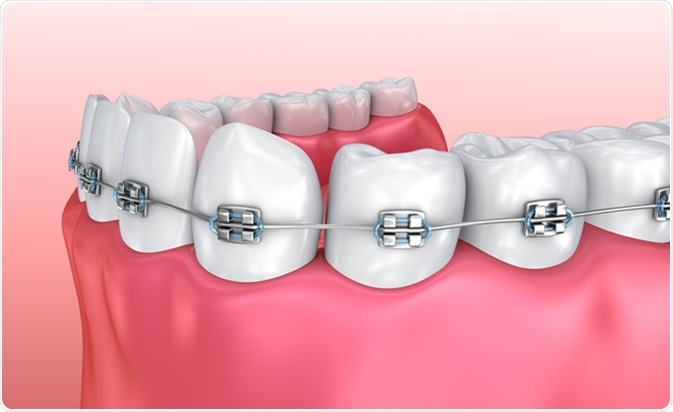How Cumming Orthodontics Can Change Your Smile with Invisalign and Braces
How Cumming Orthodontics Can Change Your Smile with Invisalign and Braces
Blog Article
Comprehensive Overview to Orthodontics Treatments for Fixing Dental Imbalances
In the world of orthodontics, the journey to achieving a perfectly aligned smile entails a myriad of procedures tailored to fix dental misalignments. From standard dental braces to unseen aligners and even surgical choices, the field of orthodontics uses a variety of options to resolve varying degrees of dental irregularities. Comprehending the complexities of each procedure, including their devices, advantages, and potential drawbacks, is essential in making notified decisions concerning one's orthodontic therapy. As we browse with the extensive overview to orthodontic procedures for dealing with oral imbalances, the complex details of each approach will certainly unfold, dropping light on the course toward a harmonious and functional dental alignment.
Orthodontic Procedures Summary

In enhancement to clear aligners and conventional dental braces, orthodontists may likewise advise other treatments like headwear, palatal expanders, or retainers to deal with details placement issues (aligners). These treatments are customized per client's one-of-a-kind demands and might entail a combination of treatments to accomplish the wanted results. Regular modifications and tracking are vital parts of orthodontic therapy to ensure development gets on track and to make any kind of necessary modifications along the way. By undertaking orthodontic procedures, patients can not just achieve a straighter smile yet also improve their general oral health and wellness and feature.
Standard Braces: Exactly How They Work
When considering orthodontic therapies for oral misalignments, typical braces stand out as a tried and true approach for fixing teeth placing. Typical dental braces are composed of brackets, cables, and bands that function with each other to apply continuous stress on the teeth, gradually relocating them right into the desired positioning.
As stress is used to the teeth via the dental braces, the bone bordering the teeth is improved to sustain the brand-new tooth settings. Individuals will certainly require routine modifications at the orthodontist's office to guarantee the dental braces proceed to apply the appropriate pressure for effective teeth movement.
Unnoticeable Aligners: Cons and pros
Unnoticeable aligners offer a hassle-free and very discreet option to conventional braces for correcting oral imbalances. These clear, tailor-made trays are essentially undetectable when worn, making them an enticing option for people looking for a much more visually pleasing orthodontic therapy. Among the primary benefits of unseen aligners is their removability, enabling for simpler maintenance of dental hygiene contrasted to traditional braces. Patients can get rid of the local dentist in my area aligners before eating or cleaning their teeth, reducing the danger of food obtaining stuck in the device and simplifying the cleansing process.

Surgical Orthodontic Options
Surgical treatments in orthodontics existing sensible alternatives for addressing complex oral imbalances that might not be successfully solved with traditional orthodontic treatments. While conventional braces and unnoticeable aligners can deal with several orthodontic concerns, specific cases require medical treatment to accomplish optimal outcomes. Surgical orthodontic alternatives are normally suggested for serious malocclusions, considerable jaw discrepancies, and instances where the underlying bone framework you can find out more needs modification to attain appropriate alignment.
One usual medical orthodontic procedure is orthognathic surgical procedure, which includes repositioning the jaws to deal with practical issues such as trouble chewing or talking. This surgical procedure is typically performed in cooperation with an orthodontist who assists align the teeth prior to and after the procedure. Surgical orthodontics might also involve treatments to expose affected teeth, remove excess gum cells, or improve the jawbone to produce a much more harmonious facial account.
Prior to considering surgical orthodontic options, people go through an extensive analysis to establish the necessity and prospective advantages of such interventions. braces. While surgical procedure may seem daunting, it can significantly enhance both the feature and visual appeals of the smile in instances where conventional orthodontic treatments drop short
Retainers and Post-Treatment Treatment

Failing to abide with post-treatment treatment directions can result in relapse, where the teeth slowly move back towards their original positions. Consistent retainer wear, excellent dental hygiene, and regular dental exams are crucial for keeping the results achieved through orthodontic surgical procedure and making certain the long-lasting stability of the corrected oral placement.
Conclusion
To conclude, orthodontic treatments use different options for fixing oral learn this here now misalignments. Typical braces utilize steel braces and cords to shift teeth right into correct positioning. Unnoticeable aligners provide an even more discreet alternative however might not appropriate for all situations. Surgical orthodontic options are readily available for more serious misalignments. Retainers are generally utilized post-treatment to keep the new alignment. Generally, orthodontic procedures can successfully improve oral health and visual appearance.
As we browse through the detailed guide to orthodontic procedures for dealing with dental misalignments, the detailed details of each technique will certainly unravel, shedding light on the path towards a harmonious and practical dental positioning. - invisalign
One of the most usual orthodontic treatments is the use of dental braces, which are composed of steel brackets and cables that apply mild stress to progressively shift teeth into the preferred position.When considering orthodontic treatments for dental imbalances, standard braces stand out as a time-tested technique for remedying teeth positioning. Furthermore, undetectable aligners might not be ideal for intricate orthodontic problems that call for even more substantial teeth motion, as they are normally advised for light to modest situations. Retainers are tailor-made orthodontic devices developed to hold teeth in their fixed settings after the completion of orthodontic treatment.
Report this page